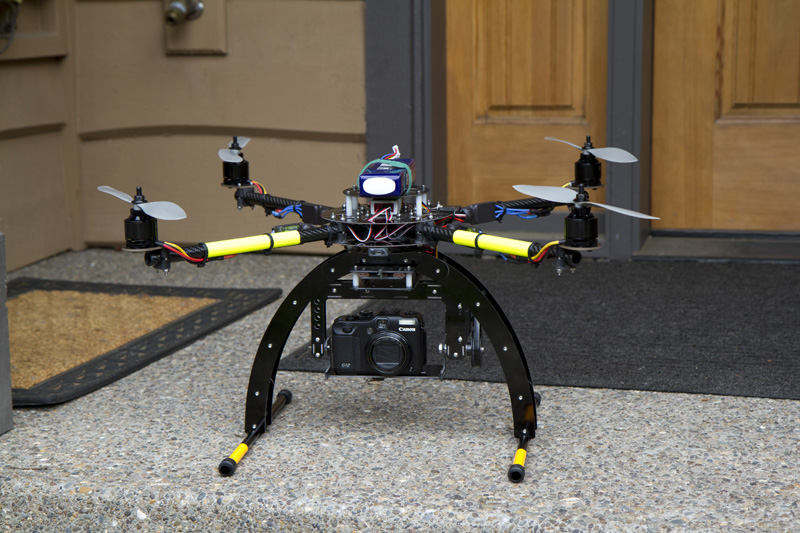seagee
Member
ESC high frequency fear uncertainty and doubt
As the life cycle of DJI WKM & NAZA progress (and converge?) I see ongoing debate and more uncertainty regarding choice of ESCs.
Based upon discussions in the forums and my own experience with quad and hex (both 550 flat & 850 Y6) configurations to-date I conclude that for smaller craft, DJI’s own ESCs offer a high level of performance certainty at a mid price; however, on larger craft (>600mm) with higher investment stakes the issue is becoming ever more confusing with debates on Hercules II consolidated vs Hobbywing vs DJI and other ESCs which appear as rebranded HKs, not to mention the SimonK firmware reflashes and same-brand-label/different-internal-component pot-luck offerings.
There is some discussion on Hobbywing ESCs, a frequently mentioned brand which, as I recall, was initially recommended by DJI reps prior to DJI’s own offering being released. Hobbywing comes in various forms: Platinum vs Pentium (Funfly); and OPTO vs SBEC forms with some posters recommending avoiding ESCs with BECs due to superfluous EMI. Castle Creations newer Pheonix Ice and Pheonix Ice Lite have also now entered the arena as higher priced competitors although I note that these also contain SBECs. So what’s with the EMI here? I understand that EMI is reduced with a switching BEC but can this still be a factor in our builds?
Understanding the rapid progression over past months I’m keen on starting a general discussion on the current state of play re. ESCs in order to both help with my present dilemma of choice and help stay updated as builds progress, new offerings are released and more info comes to light.
In distilling, dare I say it – attempting to simplify all this info, I’m still not certain what would be best the ESC choice for my next build: a higher-end frame & component build. I am logically risk averse in my choice of ESC and I favor the idea of standalone ESCs vs consolidated boards at this stage due to the consolidated offering requiring a stack of two boards for a hex configuration. This would to some extent negate the simplification of integrating ESCs and leaves two redundant ESC ports.
My build is a Cinestar 6 frame with Avroto 2814 Short Shaft 770Kv motors and WKM FC. I currently have a choice of 40A HobbyWing Pentium (Flyfun) SBEC ESCs and DJI 30A ESCs. Which would be a better choice and what issues can I expect with either offering?
Colin
As the life cycle of DJI WKM & NAZA progress (and converge?) I see ongoing debate and more uncertainty regarding choice of ESCs.
Based upon discussions in the forums and my own experience with quad and hex (both 550 flat & 850 Y6) configurations to-date I conclude that for smaller craft, DJI’s own ESCs offer a high level of performance certainty at a mid price; however, on larger craft (>600mm) with higher investment stakes the issue is becoming ever more confusing with debates on Hercules II consolidated vs Hobbywing vs DJI and other ESCs which appear as rebranded HKs, not to mention the SimonK firmware reflashes and same-brand-label/different-internal-component pot-luck offerings.
There is some discussion on Hobbywing ESCs, a frequently mentioned brand which, as I recall, was initially recommended by DJI reps prior to DJI’s own offering being released. Hobbywing comes in various forms: Platinum vs Pentium (Funfly); and OPTO vs SBEC forms with some posters recommending avoiding ESCs with BECs due to superfluous EMI. Castle Creations newer Pheonix Ice and Pheonix Ice Lite have also now entered the arena as higher priced competitors although I note that these also contain SBECs. So what’s with the EMI here? I understand that EMI is reduced with a switching BEC but can this still be a factor in our builds?
Understanding the rapid progression over past months I’m keen on starting a general discussion on the current state of play re. ESCs in order to both help with my present dilemma of choice and help stay updated as builds progress, new offerings are released and more info comes to light.
In distilling, dare I say it – attempting to simplify all this info, I’m still not certain what would be best the ESC choice for my next build: a higher-end frame & component build. I am logically risk averse in my choice of ESC and I favor the idea of standalone ESCs vs consolidated boards at this stage due to the consolidated offering requiring a stack of two boards for a hex configuration. This would to some extent negate the simplification of integrating ESCs and leaves two redundant ESC ports.
My build is a Cinestar 6 frame with Avroto 2814 Short Shaft 770Kv motors and WKM FC. I currently have a choice of 40A HobbyWing Pentium (Flyfun) SBEC ESCs and DJI 30A ESCs. Which would be a better choice and what issues can I expect with either offering?
Colin
Last edited by a moderator:




